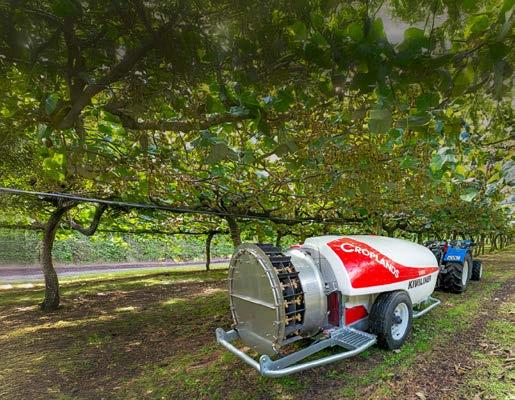
4 minute read
WINTER CHILL TRENDS
Could the warming climate influence which varieties of our major fruit crops can be easily grown in different parts of New Zealand? Could some crops be grown in regions with a more suitable climate in future? This month HortPlus shares fascinating insights from 21 years of winter chilling climate data gathered by weather stations in four New Zealand growing regions.
By HortPlus (www.hortplus.com)
Orchards across New Zealand rely on consistent chill accumulation during the winter months to ensure proper dormancy and subsequent fruit set. But as the climate warms, the number of chill hours (or chill units) crops are exposed to is changing, with potential implications for crop yield, as well as fruit size and quality.
The data from four research-grade weather stations located in Te Puke, Bay of Plenty; Havelock North, Hawke’s Bay; Richmond, Nelson; and Lincoln, Canterbury, shows significant differences and also divergence in trends. While annual chill units have remained relatively high and stable in Canterbury and Nelson over the past 21 years, they have trended down noticeably in Te Puke and Havelock North over the same period.
This need not be cause for alarm at this point because winter chilling typically remains above the thresholds for most fruit in all four regions analysed. However, it may have implications for the kinds of crops and varieties grown in different parts of the country if current trends are to continue.
As the climate continues to change, monitoring winter chill unit data and trends, and adopting adaptive strategies such as the use of dormancy-breaking agents, may also become increasingly important in regions experiencing lower chill accumulation. This is because dormancy breakers can stimulate bud break and flower numbers when winter chill is low, enabling the crops to be productive if dormancy breakers are applied at the right time.
Although the precise speed of climate change continues to be a matter for debate, there’s near universal consensus that the warming climate is a trend that will continue. For New Zealand orchardists, having access to weather stations and accurate chill unit data is likely to be increasingly important, not only for determining whether dormancy breakers are needed, but also for decision making around the next generation of crop to plant on their land.
CHILL UNIT REQUIREMENTS: BY CROP
The Richardson Chill Unit (RCU) model works well in New Zealand. There are some nuances, but in broad terms, this model attributes optimum winter chill at 4°C, no accumulation below 0°C, and it takes away winter chill accumulation at 16°C. The table below shows RCU accumulation requirements for normal spring growth for various species, noting differences in requirements for different varieties within some species as well. For example, grapes require less winter chill, allowing them to more easily grow in warmer climates without the need for dormancy breakers, whereas crops such as apples need a cooler climate or help from dormancy breakers.
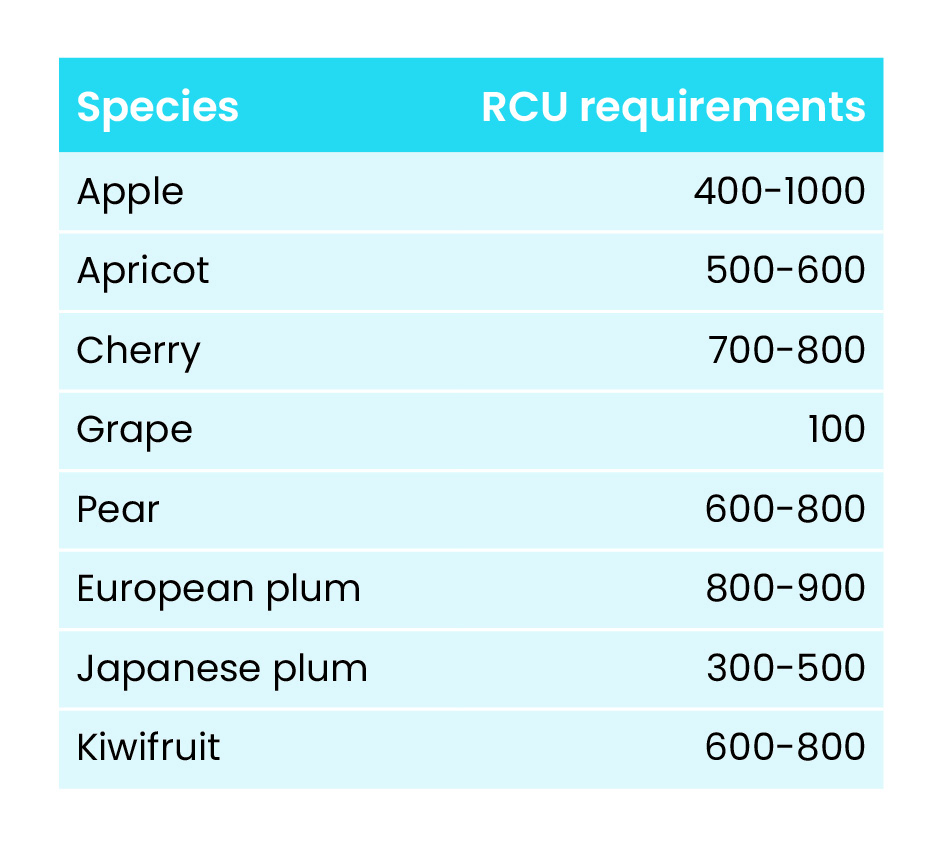
TOTAL YEARLY CHILL UNITS FOR THE WINTER SEASON FROM 2004–2024
Note: The graphs show total yearly chill units for the winter season (1 May to 31 August) from 2004–2024. They present chill unit records for a single research-grade weather station in each of the four regions. Further analysis, via HortPlus or another provider, may be required to assess the level of variability in winter chill within each of the four regions.
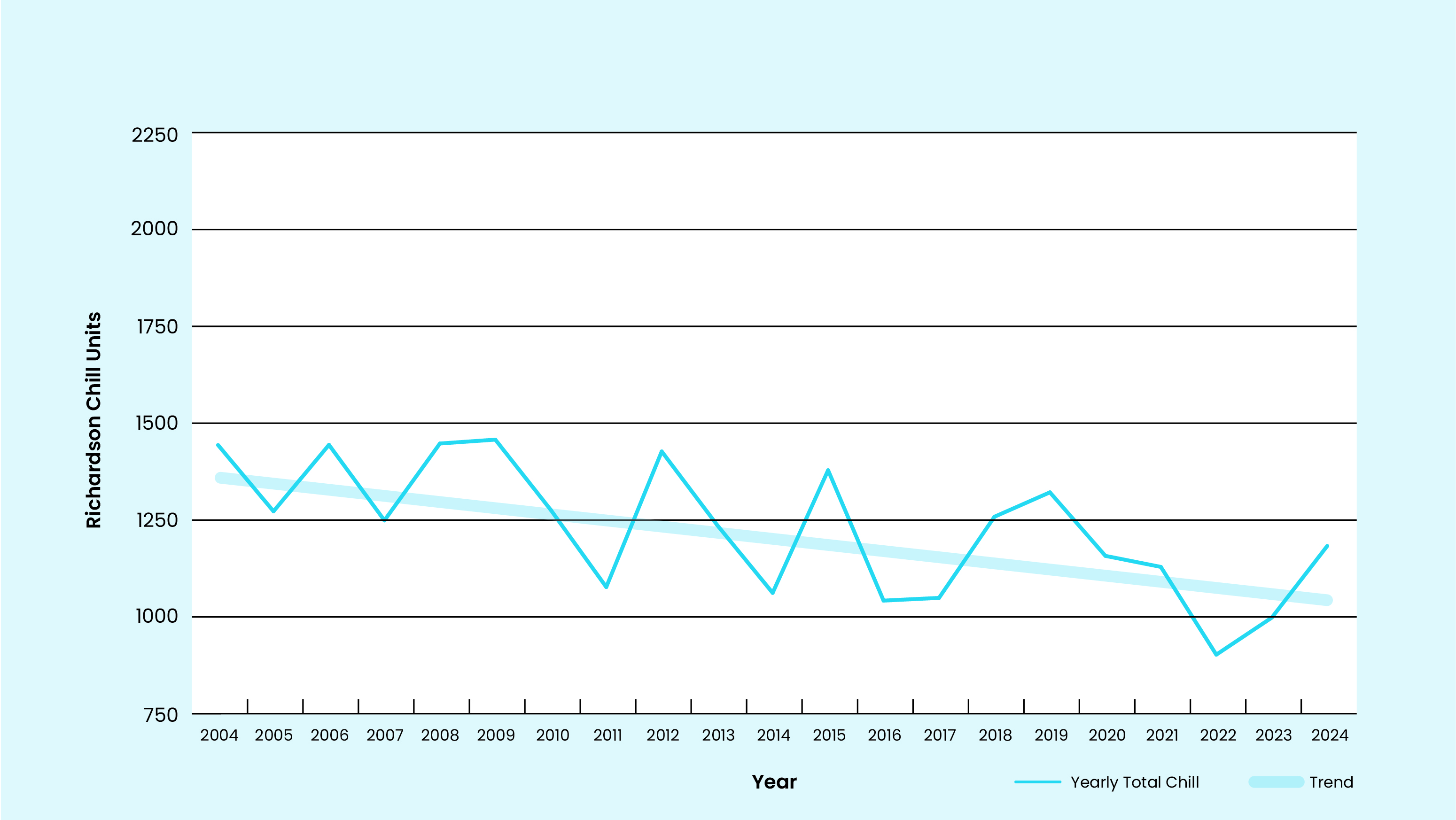
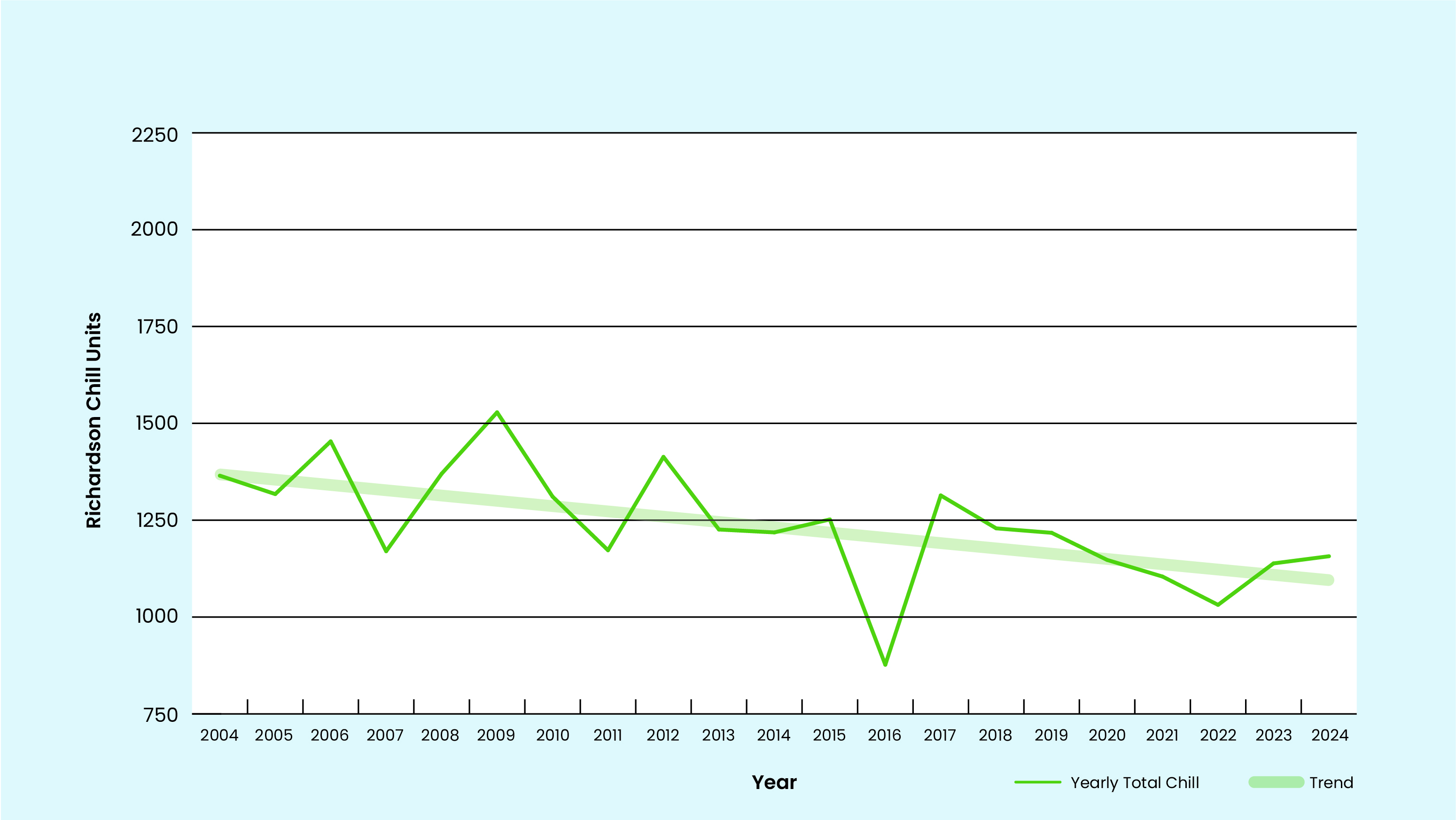
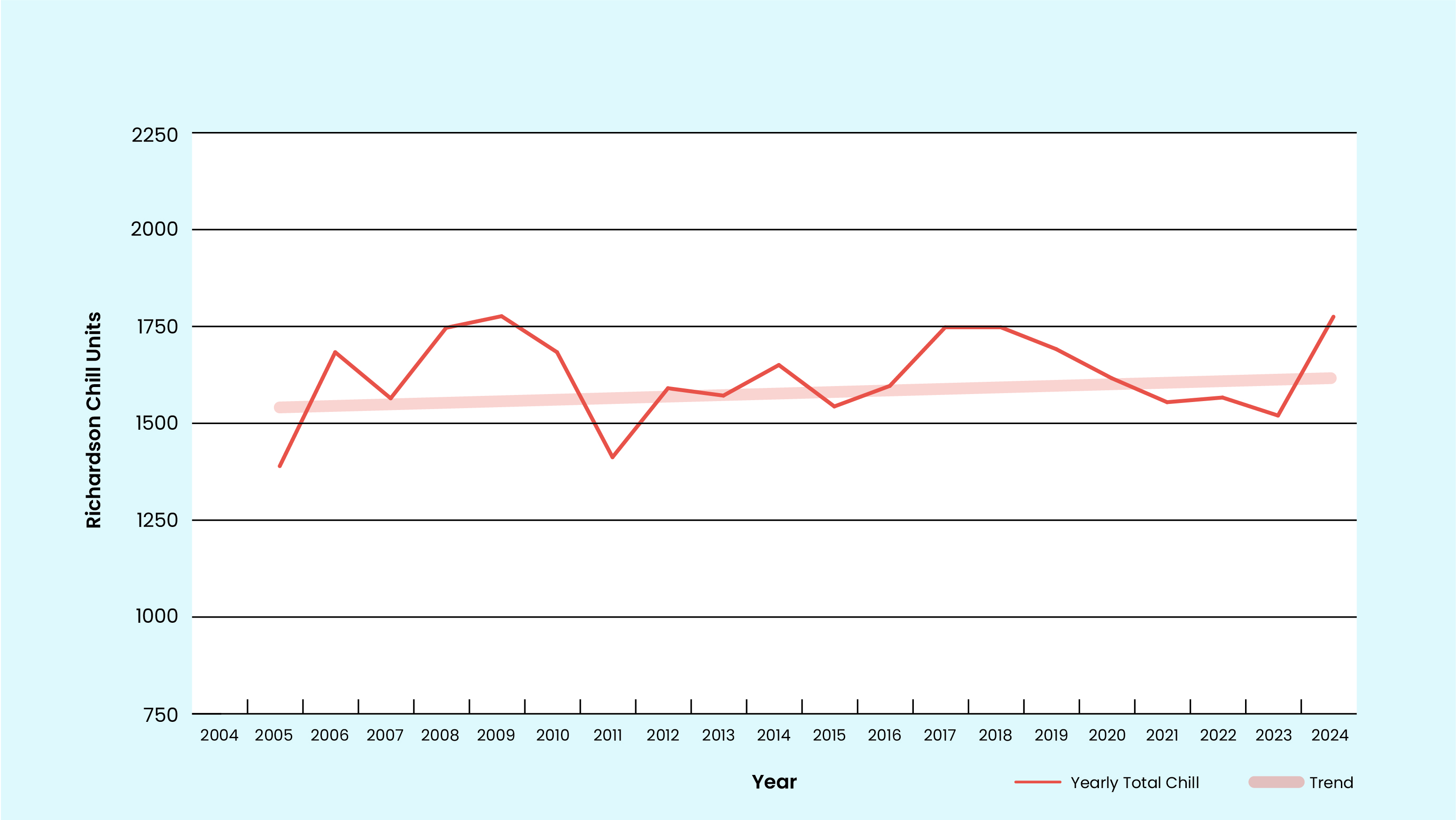

Note: The graphs show total yearly chill units for the winter season (1 May to 31 August) from 2004–2024. They present chill unit records for a single research-grade weather station in each of the four regions. Further analysis, via HortPlus or another provider, may be required to assess the level of variability in winter chill within each of the four regions.
Acknowledgements
Mike Barley, HortPlus
Richard Mills, Summerfruit NZ
Elaine Gould, PGG Wrightson.










